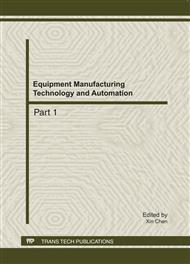p.240
p.245
p.250
p.254
p.258
p.264
p.269
p.275
p.281
The Application of Complex Spice Essential Oils on the Preservation of Pasteuriged Minced Ham Sausage
Abstract:
In order to investigate complex spice essential oils used in pasteuriged minced ham sausage (PMHS) as a novel food preservative, the studies were done as followed: firstly, we selected the optimal boil treatment to minimize SEO concentration and get the desired effect. Then, the research was done to investigate the maximum acceptable concentration of SEO used in PMHS, followed by the experiments to choose the suitable solvent from its impact on antibacterial activities and flavor on PMHS. The comparison of the antimicrobial efficacy of SEO with potassium sorbate and nisin was also studied. The results showed that the optimal boil treatment was hold the core temperature of PMHS at 85°C for 40 min. Considering the original flavor, 100uL/kg was the largest dosage. For more durable preservation and the best flavor, we used Arabica gum to emulsify diluted essential oils. The preservative effect of 100uL/kg complex spice essential oils in PMHS was better than 1500 ug/kg potassium sorbate, worse than equal dosage of nissin. In conclusion, complex spice essential oils was a suitable and efficient preservative for PMHS.
Info:
Periodical:
Pages:
258-263
Citation:
Online since:
August 2011
Authors:
Price:
Сopyright:
© 2011 Trans Tech Publications Ltd. All Rights Reserved
Share:
Citation:


